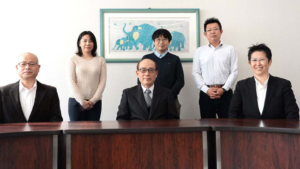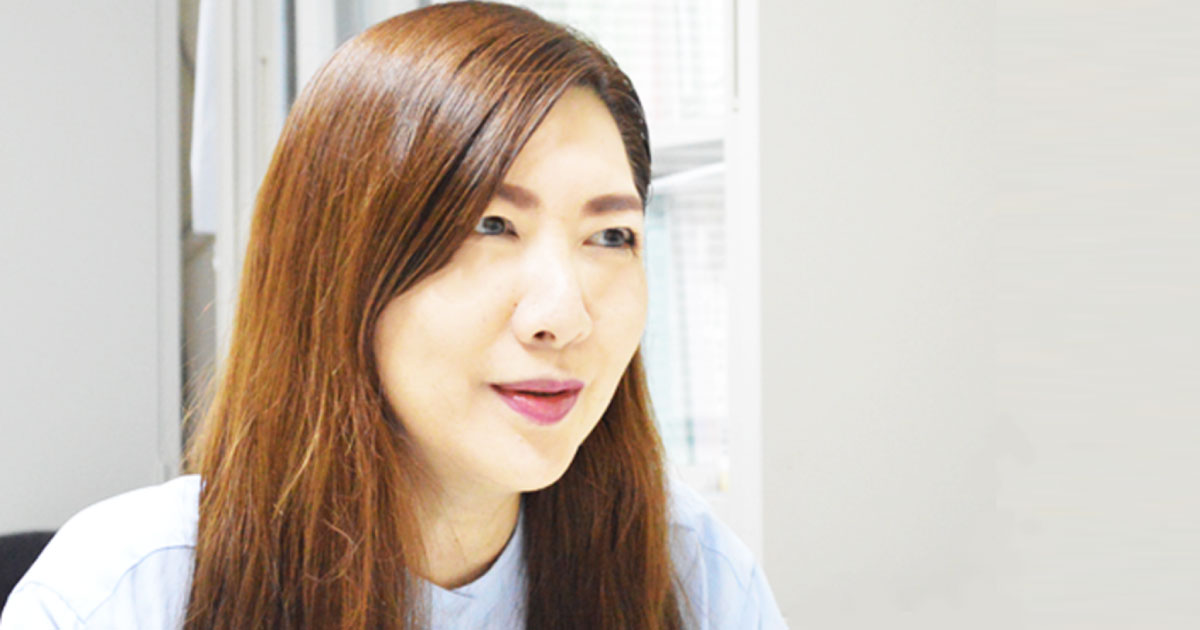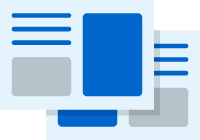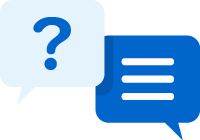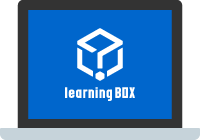Medical university reduces grade retention and dropout rates, and raise national exam pass rates.
Released on
Released on
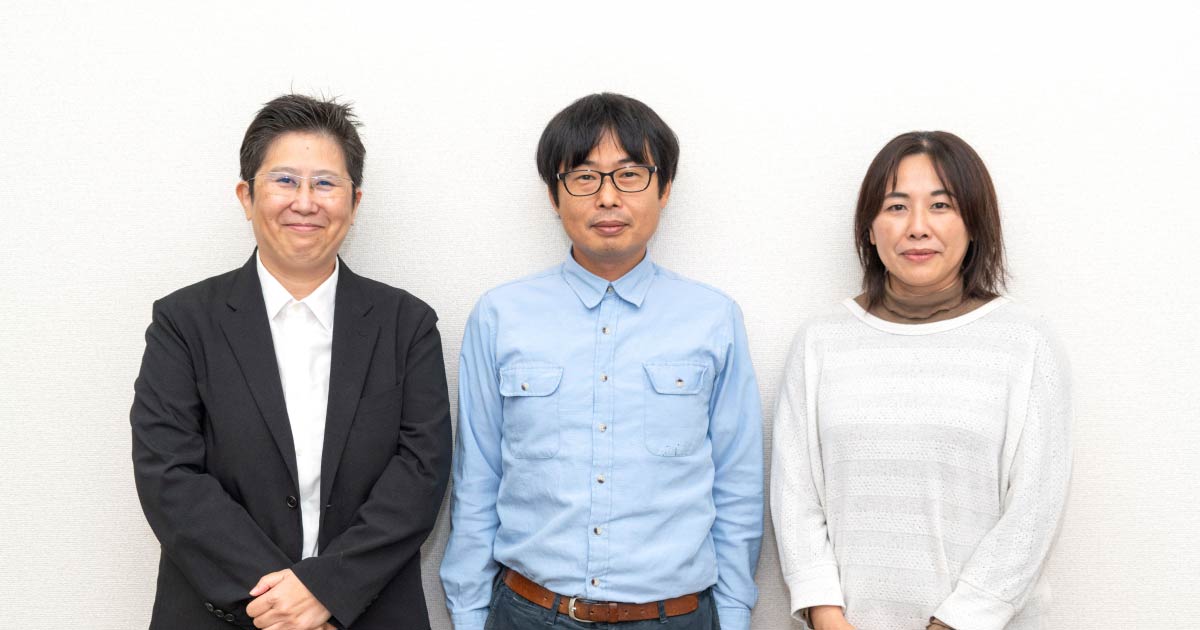
(From left to right) Ms. Hiroi Muto, Mr. Hidekazu Miura, Ms. Kanae Matsuura

- To raise the academic level of students in order to improve the pass rate of national examinations
- Academic support based on individual's level, reducing the number of students who repeat a school year, leave school or drop out
- To motivate students to learn and encourage to work on anytime, anywhere


- 100% of students (new graduates) in the Department of Clinical Engineering passed the "Clinical Engineering Technician" examination in 2022.
- Identifying students falling behind in proficiency results in support in advance, contributing to the decrease the rate of absence and dropouts.
- Continuous efforts have been made
Suzuka University of Medical Science adopted learningBOX in 2020 and has been using it in classes and exam preparation, etc. From 2023, the university added a new department and become a "comprehensive medical and welfare university" with 4 faculties, 11 departments, and 15 majors. It was shortly after the implementation of learningBOX when we interviewd them previously. Three years have passed since its full-scale operation, and we asked them again about how they are actually using learningBOX, the outcomes they are experiencing, and their future outlook. For this interview, we asked faculty members of the Department of Clinical Engineering, Faculty of Biomedical Engineering, and the Department of Radiological Technology, Faculty of Health Sciences, who have been actively using learningBOX since its introduction.
▼First case study published in 2022
Suzuka University of Medical Science and learningBOX, Inc. signed a memorandum of understanding on industry-academia cooperation in November 2022. In 2023, the two parties received the internationally prestigious IMS Japan Award for Excellence in recognition of the results of their joint research.
Related article:
Suzuka University of Medical Science and learningBOX sign MOU on industry-university cooperation
learningBOX holds "Review Meeting" on e-learning learning in Pakistan
EdTech Startup learningBOX Wins Internationally Prestigious IMS Japan Award for Excellence
Research Report
LMS Utilization and Its Effectiveness in Medical Universities
Easier management of learning, making it easier to follow up with each student
It has been about three years since you started using learningBOX. What outcomes have you seen?
Mr. Miura:The best thing about the introduction of learningBOX is that it properly functions as an LMS (Learning Management System). We can now immediately detect students who are not studying.
By looking at the study status of content designated for assignments and exam coverage, students can tell at a glance what they are not working on. We are now able to identify students who may be falling behind in proficiency and follow up with them immediately.
Ms. Matsuura:The Department of Radiologic Technology and Science conducts individual interviews at least twice a year each semester, and additional interviews are conducted with students who are required to retake their regular exams. In addition, interviews are also conducted with students who have neglected their learningBOX assignments. The students are able to see their learning status at a glance, so they feel that there is no way for them to get away with it.
What has changed now that you are able to follow up with them individually?
Mr. Miura:Gradually, the grade retention rate is decreasing. Until now, students who stayed in school without good grades often gave up and dropped out.
Mr. Muto:It is very significant that the grade retention and leave/withdrawal rates are also on the decline. I feel that our students are now able to learn according to their individual proficiency levels.
For example, in addition to the content that is mandatory for all, Interlocking contentwhich automatically advise students who did not score well enough using the "learningBOX" are asked to study additional content. We take an individual approach by changing the method of questions and adding videos, etc. Students work very hard because they cannot pass the regular exams without tackling the3 content in learningBOX.
Did the introduction of learningBOX change the way students study itself?
Ms. Matsuura:That's right. The scope of study in the medical field is wide, and from the standpoint of the data handled, I think it will be a long time before textbooks themselves are digitized. Therefore, the lectures themselves are paper-based, but in the Department of Radiological Technology and Science, learningBOX is mainly used as a supplementary material to convey the main points, such as preparation and review.
Before the introduction of learningBOX, we had students make and submit class notes anyway. The purpose was to have students review semi-mandatorily by having them make notes after class. After the introduction of learningBOX, we have continued to have students submit their notes, but we are now experimenting with various methods, such as adding content to learningBOX to force students to continue reviewing, or uploading preparatory videos for students to watch.
In addition to the required content, we also upload a 15-minute digest of the class videos so that they can be viewed at any time.
Mr. Miura:When I put content on the learningBOX, students know that they can pass the regular exam if they do this, so they come back to study hard. If they don't study, they won't pass the exam, so if we put the content on the learningBOX, they work on it voluntarily.
Compared to before the introduction of learningBOX, the study time has definitely increased. However, some students say that if the amount of content is too large, they cannot finish studying them, so we need to make adjustments in this area.
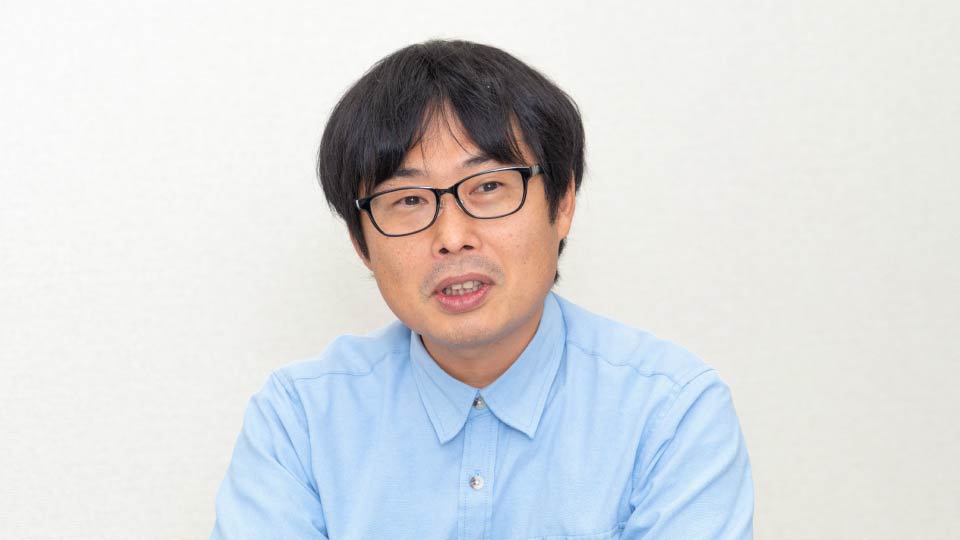
So learningBOX is becoming more and more popular among students.
Ms. Matsuura:When we had only a textbook-based learning, there were times when students did not know how to study, or even they studied, it did not lead to a better score. But since the introduction of learningBOX, questions like "Where should I study?" has disappeared. I think it is especially helpful for students who are trying to study steadily on their own.
We have even received requests from students to use learningBOX in the courses where it have not yet been introduced.
Mr. Miura:If our students ask me "Do you have any sample of the past exmas?" or "What should I study?", I send them the content on the learningBOX. It has become very convenient.
learningBOX is steadily becoming popular among teachers.
It seems that learningBOX is becoming much more popular among teachers.
Mr. Muto:There are 15 faculty members in the Department of Radiological Technology and Science, and currently 13 are using the system. The way they use the system varies from faculty member to faculty member: only for quizzes, only for distributing materials, or for creating and distributing content, etc.
Mr. Miura:In the Department of Clinical Engineering, there are 13 faculty members and 10 are using the LMS. In addition, we have formed our own "LMS Study Group" within the university. The LMS study group has been held a total of 17 times by 2023. The themes include basic usage of the LMS, examples of teaching methods using the LMS, and the use of the LMS in other institutions.
We also held an LMS study group together from the learningBOX headquarters, didn't we?
Mr. Miura:It was great to be able to talk directly with the system developers! Then, the LMS Study Group hosted a "learningBOX Study Session" for teachers who would like to use learningBOX in the future. The study session was held in small groups to answer individual questions. We would like to continue our activities so that more faculty members can make use of learningBOX in the future.
Are there any challenges you are experiencing in utilizing learningBOX?
Ms. Matsuura:It is good that the learningBOX is spreading among students, but there are a certain number of students who think that they only need to study the scope of the learningBOX, and we are now considering how to counter this.
Initially, we used a method in which the material was made into courses and the difficulty level was increased step by step until all the questions on the test were eventually answered correctly, which led to an increase in the overall academic ability of the students. We are considering various methods, such as increasing the number of contents, pursuing more in-depth questions, and devising question formats.
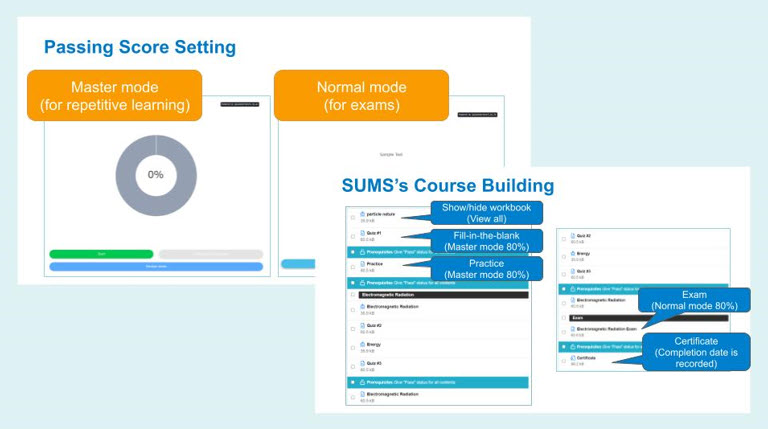
Mr. Miura:Some faculty members who participated in the LMS study group said that the pattern of devising question formats was effective because students have a hard time when the volume of questions is too large. I think the major issue at this stage is how to enrich the content.
In the fall of 2023, learningBOX released "AI Assist," a ChatGPT-linked function that incorporates automatic generation of teaching materials, etc. We hope that you will make use of this function as well.
Using learningBOX to Prepare for National Exams, Pass Rate on the Rise
When is the preparation for the National Examination conducted?
Mr. Miura:In the clinical engineering department, you are in your fourth year. In the first semester, students have 6 weeks of practical training at the hospital, and the measures are implemented in between and in the second semester.
Mr. Muto:Although the Department of Radiological Technology Science also does not begin full-fledged preparation until the fourth year, the content of classes is designed to make students aware of the scope of the national examination from the first year of specialized courses. Students take mock examinations to prepare for the national examinations starting in their third year.
Practical training is 12 weeks in the first semester of the 4th year, but from the 2024 academic year, the curriculum will change to include practical training in the second semester of the 3rd year and the first semester of the 4th year. Except during the practical training, you are preparing for the national exam all the time. This will be a period of tackling past exams, understanding the manuals, and taking supplementary classes.
We were told that we need to pass multiple exams before even taking the national exam.
Mr. Miura:In the clinical engineering department, there is a national mock exam (held from December to January) before the national exam held in March every year. Since we started using learningBOX, the percentage of students who stay in their fourth year has been decreasing.
In addition, each grade has a set number of credits for specialized courses required for advancement, and students must pass periodic examinations in order to advance to the next grade. In addition to the regular examinations each term, the school conducts mid-term examinations and other tests four times a year.
Ms. Matsuura:The Department of Radiological Technology conducts a regular examination at the end of December for the "Comprehensive Exercise in Radiological Science" in the fourth year, which is regarded as the final examination for the national examination held in February every year. Failure to pass the examination results in the student being retained in the fourth year, but the number of students who remain in the same year has been decreasing since the introduction of the learningBOX.
Can you tell us the actual pass rate for the national exam?
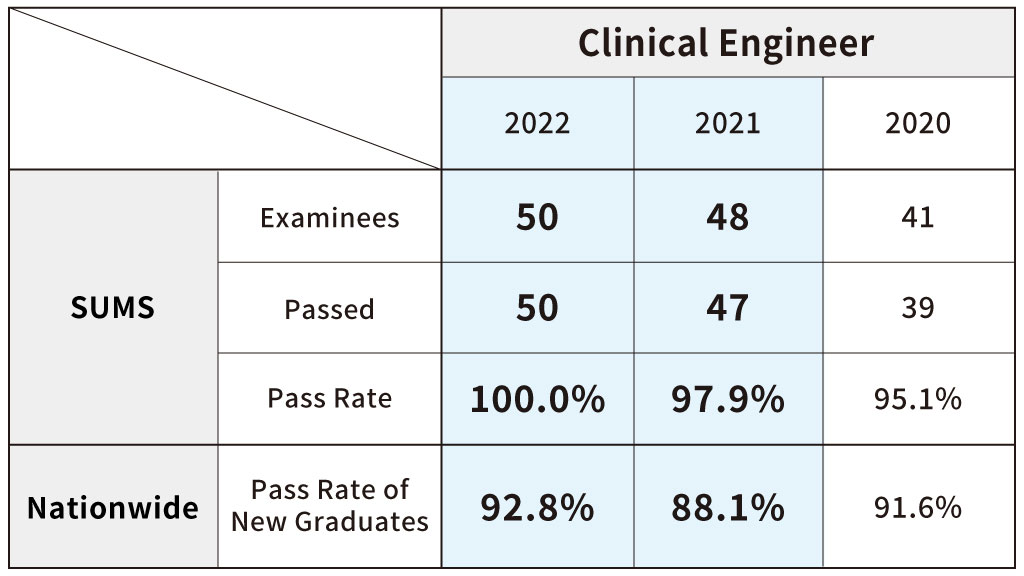

Ms. Matsuura:Please see the table above for the pass rates. In the Department of Radiological Technology and Science, Dr. Muto started using learningBOX in 2018, and we began implementing it in some classes in 2019. 2020 will be the year of full implementation.
The Department of Radiological Technology and Science is still in the process of fully utilizing the learningBOX to prepare for the national exam, so I do not think it is directly reflected in the passing rate of the national exam. However, for students with lower grades, we are adding multiple questions and asking them to solve questions only first thing in the morning so that they can wake up and study properly in the morning since they do not have classes in the second semester.
Mr. Miura:Since the Department of Clinical Engineering fully introduced learningBOX in 2021, its effectiveness is reflected in the results of the national examinations in 2021 and 2022, showing an upward trend. The educational materials that I think are most effective are still the question papers and explanations for the national examinations, regular examinations, and mock examinations. We have made it possible to view a list of previous years' materials to improve accessibility to the teaching materials and to use the learningBOX'sPDFfunction has highlighting and notes, so I have them take advantage of that.
Due in part to the declining birth rate, the academic performance of incoming students is declining. We feel that further efforts are needed to maintain such a high acceptance rate.
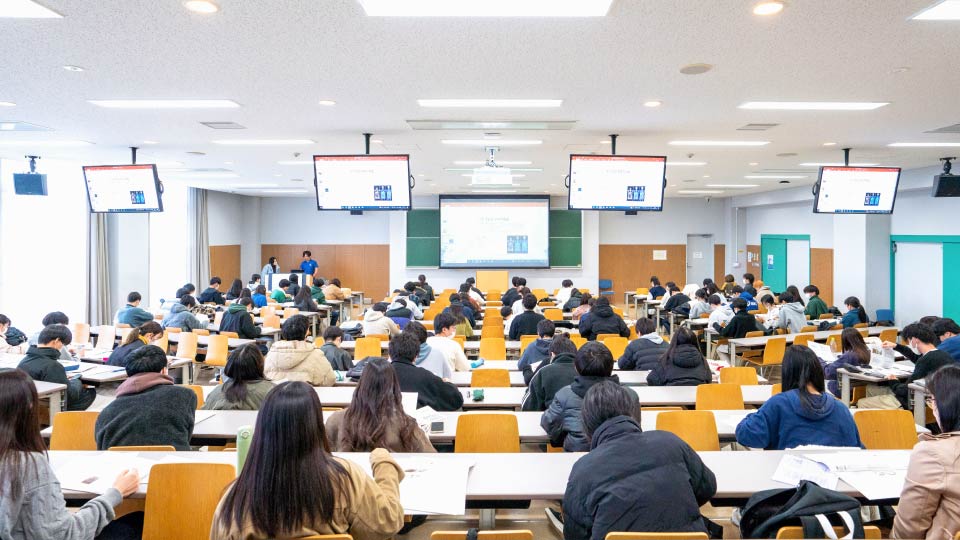
What do you plan to do to prepare for future national examinations?
Ms. Matsuura:In the Department of Radiological Technology and Science, we would like to create a database of past national exam questions and add explanations to it. Also, when studying video content, some students inevitably learn only on the surface, so we would like to enhance the content so that they can properly understand the truth of the matter.
I also have a subject where I upload and utilize a lot of 10-minute videos, and I would like to implement that in other subjects.
Mr. Muto:The Department of Radiologic Technology and Science conducts a mock exam once a month. I would like to be able to see the results and return to the learningBOX for further study. Also, as you mentioned earlier, we would like to make good use of the AI function.
The department also recommends the national exam for "Type 1 Chief Radiation Protection Officer" and we would like to increase the number of students who pass this exam as well. We would like to utilize learningBOX for the preparation for this exam as well, although it is still in its infancy.
Mr. Miura:The Department of Clinical Engineering conducts mock exams on paper. However, paper alone tends to lack the work of understanding the explanations by oneself, so we would like to supplement that part with learningBOX. It is very important to understand what is wrong by yourself.
In the beginning, we prepared many multiple-choice questions in learningBOX as we do in the national examinations, but recently we have been trying to provide more descriptive questions. When it comes to the descriptive type, students study in advance to prepare sample answers. I feel that the repetition of this process has led to an increase in test scores. The Department of Clinical Engineering also uses learningBOX for periodic examinations, and we are also considering having students re-answer the questions after a certain period of time has passed.
In addition, like the Department of Radiological Technology, we plan to create a database of past national exam questions on learningBOX and include explanations. The point is to show students the explanations for each question so that they can see where they went wrong. It is important to check each question, not after all the questions have been solved.
I would be happy to discuss things with learningBOX again.
Yes, we are looking forward to working with you. We would like to share information on the creation of effective teaching materials and make mutual suggestions for functional improvements, while working to further optimize individualized learning and improve the pass rate for national examinations.
Thank you for your participation
.


